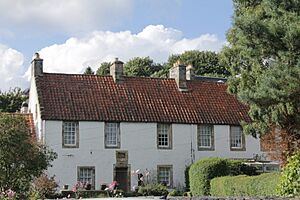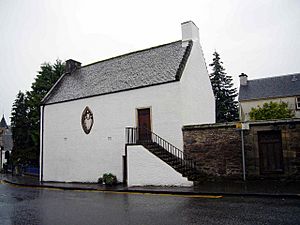Robert Leighton (bishop) facts for kids
Quick facts for kids The Most Reverend Robert Leighton |
|
|---|---|
| Archbishop of Glasgow | |
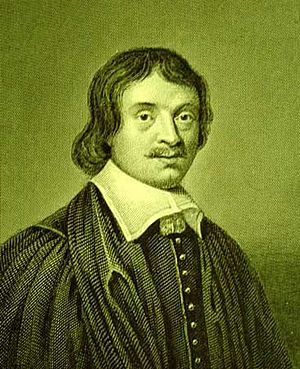
A. W. Warren's 1825 depiction of the archbishop.
|
|
| Church | Church of Scotland |
| Archdiocese | Glasgow |
| In Office | 1671–1674 |
| Predecessor | Alexander Burnet |
| Successor | Alexander Burnet |
| Orders | |
| Consecration | 15 December 1661 by Gilbert Sheldon |
| Personal details | |
| Born | 1611 London, England |
| Died | 25 June 1684 London, England |
| Parents | Alexander Leighton |
| Occupation |
|
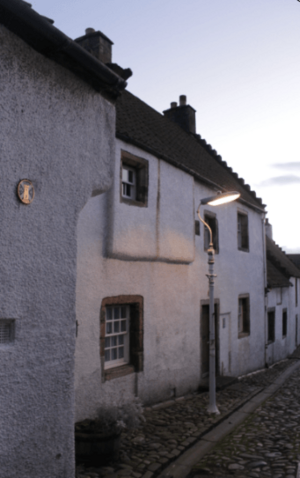
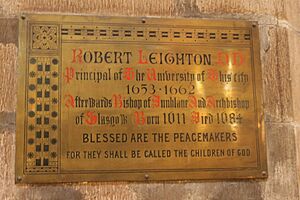
Robert Leighton (born in 1611 – died June 25, 1684) was an important Scottish church leader and scholar. He is best known for being a minister, a Bishop of Dunblane, and later an Archbishop of Glasgow. He also served as the Principal of the University of Edinburgh from 1653 to 1662. People remembered him for his deep religious faith, his humble and gentle nature, and his dedication to his work.
Contents
Robert Leighton's Early Life
Robert Leighton lived during a very challenging time in Scottish history. His grandfather was a Catholic before the big changes of the Reformation. His father, Doctor Alexander Leighton, faced harsh punishment from King Charles I. This was because his father held strong Presbyterian beliefs and wrote a book criticizing the church's bishops. Robert himself became an archbishop during a time when the Church of Scotland was run by bishops.
Robert Leighton was born in London in 1611. His parents were Scottish. From a young age, people noticed Robert for his very good and kind nature. This was true even though his family faced difficulties. In 1627, when he was sixteen, Robert Leighton started studying at the University of Edinburgh. He earned his Master of Arts (MA) degree in 1631.
After finishing university, his father sent him to travel abroad. Robert spent several years in France, where he learned to speak French perfectly. While there, he spent time with relatives in Douai who had become Roman Catholics. He kept in touch with them for many years. These experiences helped him become very kind towards people with different religious ideas. This kindness became a key part of his personality.
Becoming a Church Leader
After returning to Scotland, Robert Leighton became a minister in the Church of Scotland. He was 30 years old when he was ordained on December 16, 1641. This happened at Newbattle in Midlothian.
It took some time for Leighton to be fully accepted as a minister. This was due to the trouble caused by his father's actions. Church records show he had to give five practice sermons before he was accepted. Two of these sermons were given on the same day.
Leighton signed the Solemn League and Covenant in 1643. This was an important agreement during the British Civil Wars. He served at Newbattle for eleven years. He left his position in 1652. It seems he disagreed with how strongly some other ministers felt about political issues. This led to them criticizing him.
Leading the University of Edinburgh
In early 1653, Leighton was chosen to be the principal of the University of Edinburgh. He also became the main professor of divinity (the study of religion). The person originally chosen for the job, William Colvill, could not take it. He was in the Netherlands at the time. So, the position became open again, and Leighton was appointed.
Leighton stayed in this role until 1662. Then, William Colvill, who had returned to Scotland, took over. Many of Leighton's Latin lectures and speeches were published after he died. They are known for their clear and elegant Latin. They also show a calm and thoughtful way of speaking. These writings teach how to live a holy life. They show that he was a very learned person who knew a lot about classical texts and early Christian writings. They also show he lived a life focused on spiritual things.
While at the university and later, he wrote comments on books of the New Testament. His religious lectures were also published. Some famous ones include An Exposition of the Creed, Lord's prayer and Ten Commandments and Rules and Instructions for a Holy Life.
Bishop and Archbishop Roles
Even though he was a Presbyterian minister, Leighton agreed to become a Bishop in 1661. This appointment came from King Charles II. Leighton knew people might think he wanted more power. So, he asked for the job in Dunblane, which was the smallest and poorest area for a bishop in Scotland.
He wanted to bring together Presbyterians and Episcopalians into one united Church of Scotland. However, his gentle nature made this difficult. Bishop Leighton suggested a system where bishops would follow the ideas of their local ministers. But the other bishops did not like this idea. He tried to resign in 1665 and traveled to London to do so. However, he did not go through with it after King Charles II agreed to make things a bit easier. He tried to resign again in 1669, but not much changed.
In 1670, he reluctantly agreed to become Archbishop of Glasgow. In this higher role, he worked even harder to bring Presbyterians and Episcopalians together. But this only caused problems for him with both groups. He resigned from the archbishop role in 1674.
Robert Leighton's Religious Views
Leighton saw good and bad points in both the Episcopal (run by bishops) and the English Puritan (strict Protestant) ways of worship. He left his ministry at Newbattle partly because of new ideas about church teachings and practices. He became known as Scotland's "Apostle of Peace." He then served as principal of Edinburgh University for eight years. Later, King Charles II called him to London. He was one of four bishops chosen to help manage the church in the north of England in the "Westminster Way." This led to his time as bishop in Dunblane and then as archbishop in Glasgow.
Later Life and Legacy
After leaving his archbishop position in 1674, Leighton moved to the home of his widowed sister, Sapphira. She lived with her son at Broadhurst, near Horsted Keynes in Sussex.
Leighton died suddenly on June 25, 1684, during a trip to London. He passed away in an inn near the partly finished St Paul's Cathedral. His last wish was that "At eventide there might be light."
Leighton was buried in Horsted Keynes. In his will, he left his collection of 1,400 books and money to build the Leighton Library. He also asked for all his personal papers to be destroyed, but this never happened.
After his death, a book he wrote about the New Testament book of 1 Peter was published. It came out in two parts in 1693 and 1694. This book has almost always been in print since then.
Family Life
Leighton never married, so he did not have any children.
- Father: Alexander Leighton
- Mother: Unknown (Alexander's first wife)
- Brother: Elisha Leighton (died 1684), later known as Sir Ellis Leighton. He was a secretary to important people.
- Sister: Sapphira (later Mrs Edward Lightmaker) (1623–1704)
- Other Siblings: James, Caleb, Elizabeth. These siblings did not live to be adults. However, Elizabeth might have, as Leighton mentioned his "sisters" in a letter.
His brother, Adam Lighton or Leighton, was a minister at Currie parish church. Adam's son, Matthew Leighton (Robert's nephew), later took over this role.
The Leighton Library
Leighton was a very smart scholar with many different interests. His legacy lives on today through the Leighton Library. This is the oldest library in Scotland that was built specifically to be a library.
It holds about 4,000 books and 78 old handwritten documents. These items date from the 16th to the 19th century. The library started with Leighton's own collection. He left about 1,500 books to Dunblane Cathedral. A building was built between 1684 and 1688 to keep these books. They were meant for local church leaders to use. From 1734, the library became one of the first libraries in Scotland where people could pay a fee to borrow books. The collection covers many topics, including history, politics (especially the 17th century), religion, medicine, travel, and languages.
Some of the books were originally owned by Newbattle and kept at the Old Manse. Now, the entire collection is held at The Cross, Dunblane. Researchers and academics can now access the library's list of contents by arranging a visit through Stirling University.


